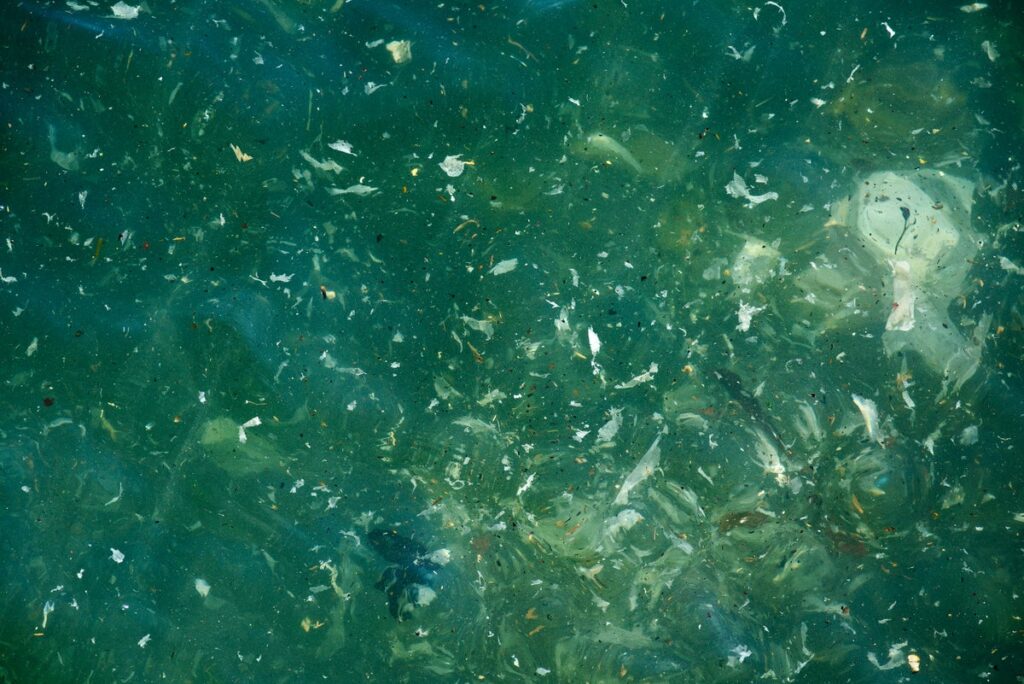Most Plastic in the Ocean Is Invisible—And Deadly
Nanoplastics—particles smaller than a human hair—can pass through cell walls and enter the food web. New research suggest 27 million metric tons of nanoplastics are spread across just the top layer of the North Atlantic
Sergi Escribano/Getty Images
Marine plastic litter tends to grab headlines, with images of suffocating seabirds or bottles washing up along coastlines. Increasingly, researchers have been finding tiny microplastic fragments across all environments, from the most densely populated cities to pristine mountaintops, as well as in human tissue including the brain and placenta. A study published today reveals yet another hidden source of this deadly waste: nanometre-scale particles are literally everywhere, says co-author Dušan Materić, an environmental analytical chemist at the Helmholtz Centre for Environmental Research in Leipzig, Germany.
Materić and his colleagues sampled water at three depths representative of different environments in the North Atlantic Ocean. Throughout the water column, they found three types of nanoplastic: polyethylene terephthalate (PET), polystyrene (PS) and polyvinylchloride (PVC). These were present at average concentrations of 18 milligrams per metre cubed, which translates to 27 million tonnes of nanoplastics spread across just the top layer of the temperate to subtropical North Atlantic. “Nanoplastics make up the dominant fraction of marine plastic pollution,” Materić says. In the entire world’s oceans, it is estimated that there are around 3 million tonnes of floating plastic pollution — excluding nanoplastics.
What are plastic nanoparticles and how different are they from microplastics?
On supporting science journalism
If you’re enjoying this article, consider supporting our award-winning journalism by subscribing. By purchasing a subscription you are helping to ensure the future of impactful stories about the discoveries and ideas shaping our world today.
The tiniest of pieces of plastic, nanoplastics are defined by the researchers as having a diameter of less than one micrometre (one one-thousandth of a metre). Microplastics are between one micrometre and 5 millimetres across. At the smaller scale of nanoplastics, materials behave differently. Materić and his colleagues found that the particles were distributed throughout the water column, rather than settling to the bottom. The movement of the nanoplastic particles was dominated not by gravity, but by the random movement called Brownian motion, and by collisions with water molecules.
How did the team find the nanoplastics?
The scientists took water samples during a November 2020 cruise on research vessel Pelagia, which is owned by the Royal Netherlands Institute of Sea Research in Texel. They sampled at 12 locations: 5 in the system of circular currents called the North Atlantic subtropical gyre; 4 in the open ocean; and 3 from coastal areas on the European continental shelf. At each location, they gathered samples at depths of 10 metres and 1,000 metres below the surface, and then 30 metres off the ocean bottom.
The nanoplastics were detected using a technology called thermal-desorption proton-transfer-reaction mass spectrometry. “We faced multiple challenges,” says Materić, including the need to remove contaminants other than nanoplastics. Each 10-millilitre sample was run through a filter with micrometre pores to clear out microplastics. Samples were then slowly heated, releasing any organic matter and allowing the remaining plastics to be identified.
Not all was as expected. “We faced a big mystery,” says Materić. One major class of plastics, polyethylene (PE), was missing from the data, even though fragments almost certainly enter the ocean. The fragments probably transform into something else, or might fall to the sea bed, says Materić. “This suggests that PE nanoplastic cycling in the ocean environment follows some unusual pathway — either rapid chemical alteration or mineralization, or fast sinking.”
Should we be surprised that nanoplastics are an overlooked source of plastics pollution? Should we be worried?
“This does not come as a surprise to me, as I have been aware of the extent and magnitude of the problem for some time,” says Tony Walker, an environmental scientist at Dalhousie University in Halifax, Canada. “Nanoplastics, unlike microplastics, are able to pass through cell walls, meaning that they are already incorporated into the ocean phytoplankton which serve as the base of the marine food web and are able to be transferred through the marine food web,” he explains.
The ubiquitousness of nanoplastics means they should be taken seriously, says Materić. “Given their toxicological potential, they may represent the most problematic plastic size fraction for ocean life,” he says. Walker agrees: “This should be a wake-up call to all of us,” he says. “The extent to which nanoplastics can infiltrate every ecosystem and living cell on the planet is even far worse than what we already know about microplastics and larger plastic pollution.”
What can be done to mitigate the pollution?
The next and likely final round of negotiations for a legally binding United Nations treaty on plastics pollution will kick off in August in Geneva, Switzerland. On the table is a limit on future plastic manufacture, but this is being resisted by some countries, including those that rely on oil and gas exports to power their economies.
“One of the best strategies to mitigate future nanoplastics pollution or release into the environment is to cap plastic production,” says Walker. “Turn off the tap.”
This article is reproduced with permission and was first published on July 9, 2025.


